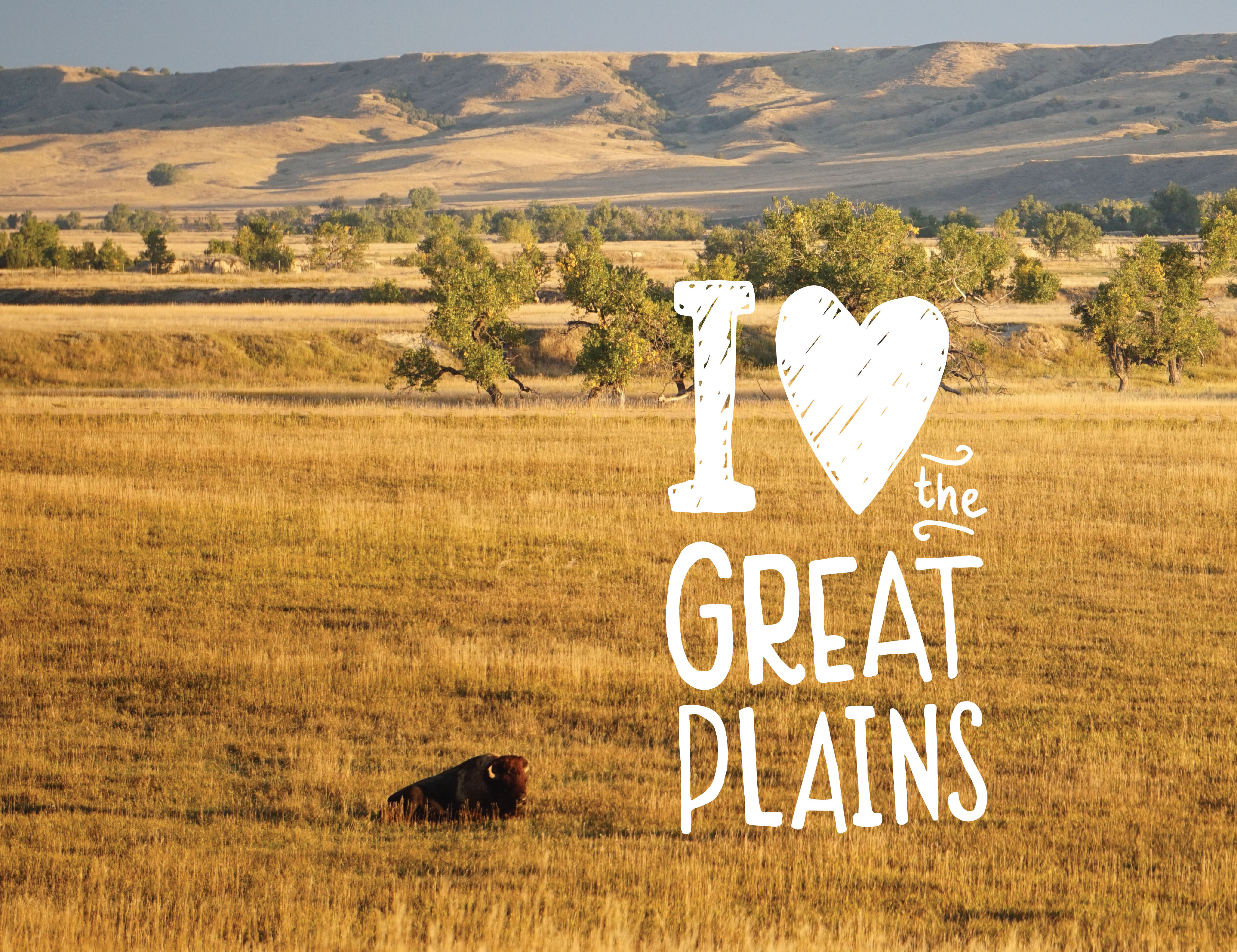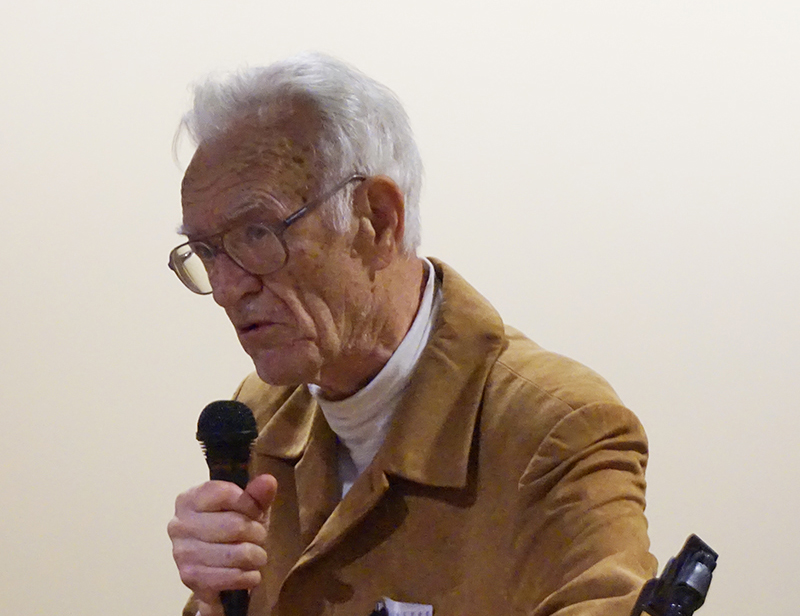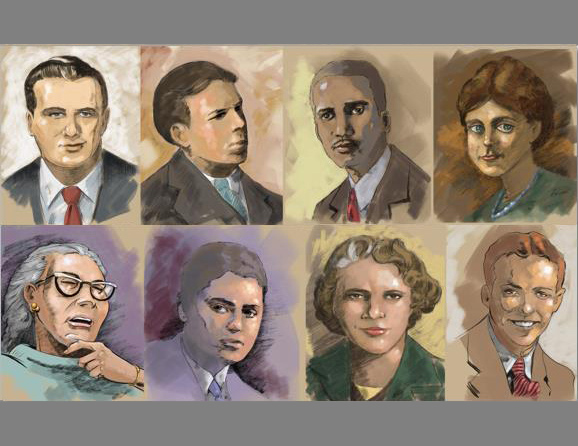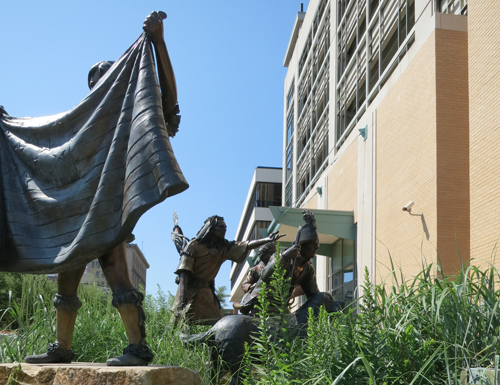The history of homesteading
This work seeks to explore and explain homesteading in the Great Plains. One project is a massive effort to digitize and make accessible to genealogists and scholars the vast homestead files lodged at the National Archives and Records Administration (Washington, DC); this is a joint project with Superintendent Mark Engler of the Homestead National Monument of America (Beatrice, NE), and Professor Kay Walter of the UNL Libraries, together with FamilySearch.org, a non-profit genealogical organization, and Fold3.com, a for-profit online records company (both located in Utah). The project recently celebrated completing the digitizing of all homestead files for Nebraska. A second project is the director's own scholarship on homesteading, including such controversies as the relationship between homesteading and Indian land dispossession, the extent of fraud in homesteading, and homesteading’s impact on the environment.
- Download the Homestead Records project poster
- Changing Perceptions of Homesteading as a Policy for Public Domain Dispersal, Great Plains Quarterly
- Why Homesteading Data Are So Bad (and What to do About it), Great Plains Quarterly
- Essay for Obama inauguration, Jan. 21, 2013
- Records project
- Digital presentation
- Homesteading land transfer Nebraska map by Russell Lang, an independent scholar from Craig, Neb.
Animations
The Center for Great Plains Studies, in collaboration with NET-TV, has produced for the World Wildlife Fund four short animated videos displaying different aspects of settlement and habitat destruction in the Great Plains. The videos concern conversion of the prairie into plowed croplands, habitat fragmentation, energy development including the spread of windfarms, decline of and partial restoration of the bison, and pronghorn migration routes.
Grassland conversion
Energy development
Bison range
Habitat fragmentation
The Center for Great Plains Studies, in collaboration with NET-TV, has produced for the World Wildlife Fund four short animated videos displaying different aspects of settlement and habitat destruction in the Great Plains. The videos were created by Scott Beachler (NET) with geographical expertise provided by Prof. Clark Archer (UNL, Geography and Center for Great Plains Studies), based in part on the maps Prof. Clark and colleagues constructed for Atlas of the Great Plains (2011, University of Nebraska Press). The videos show conversion of the prairie into plowed croplands, habitat fragmentation, energy development including the spread of windfarms, decline of and partial restoration of the bison, and pronghorn migration routes.
Population change in the Great Plains
Click here to download a Flash file of the animationThis animation was created by Dr. Kenneth French, Assistant Professor of Geography, University of Wisconsin-Parkside, while he was a student at the University of Nebraska-Lincoln. Posted with permission.
“Discover the Great Plains” Small Books
The Great Plains is often defined by its deficits – no mountains, no oceans, and (for some) no culture. In reality it is filled with important, fascinating, wondrous things (including some mountains and considerable culture). The region’s biggest deficit may be in the public’s lack of knowledge about it: most people, including many of its own residents, know little about the region, its ecology, cultures, diversity, or history.
In a series of small books published by the University of Nebraska Press, the Center for Great Plains Studies hopes to engage a general audience in a variety of Great Plains topics. The books will be short, about 125 pages, each covering a topic such as geology, ecological features, culture, bison, or US-Indian wars. The books will also provide information about where to go to experience the topic – such as where to find a Czech cultural festival or walk in a virgin prairie.
Robert Diffendal, Jr., professor emeritus of the University of Nebraska Conservation and Survey Division, is scheduled to write the first book in the series, “Geology of the Great Plains.” The book will focus on past and present definitions of the Great Plains, Diffendal's own definition, the region’s overall geological development, and descriptions of places, mostly on public lands, where readers can see excellent examples of geologic features of the Great Plains.
The Trans-Mississippi Exposition of 1898: Art, Anthropology and Popular Culture
Associate Center Director Wendy Katz is preparing an anthology that explores the 1898 Trans-Mississippi and International Exposition held in Omaha, Nebraska. The anthology turns to objects and artifacts, to material and visual culture, to provide new insights into the Exposition and its impact on the 2.6 million people who attended.
In 1898, Omaha hosted the Trans-Mississippi and International Exposition. Inspired by the Chicago World’s Fair of 1893, and in the aftermath of the Panic and depression of 1893, Omaha’s leaders and regional politicians saw an opportunity to draw national attention to the city’s strengths as a railroad and business center. It was also an opportunity to promote the region’s culture and maturity – city leaders longed to combat, or at least capitalize on the city’s reputation as a frontier town of the Wild West. With significant financial backing, the Expo’s managers, board members, and architects developed a previously unused tract of land north of the city, creating what they called “The New White City,” after Chicago’s “White City,” with temporary but splendid neo-classical structures, statuary, and a lagoon with gondoliers. Other aspects of the Expo included the Midway, a space designated for concessions, and the innovative Indian Congress, thelatter meant as “an extensive exhibit illustrative of the mode of life, native industries, and ethnic traits of as many of the aboriginal American tribes as possible.” The men, women, and children of the Indian Congress were the subjects for official Exposition photographer Frank Rinehart’s famous portraits and were intended as a foil for the display of European-American agricultural and technological progress.
However, as the title—Trans-Mississippi AND International—suggests, Omaha’s regional vision was ambitious. Only Mexico had an official display, though European and South American nations were invited. Several foreign countries were represented either by commercial entrepreneurs who stood for the country (France, for example) in an Exposition building or by Midway concessions (China). The lack of international participation and an emphasis on agriculture perhaps gave the Omaha Exposition something of the feeling of a state fair, though the U.S. government building and the Bureau of Indian Affairs’ support for the Indian Congress significantly broadened its reach. President William McKinley in Washington D.C. symbolically flipped the switch that turned on the electriclights and opened the Exposition, and during his October visit, requested viewing one of the Indian sham battles.
But since the early 1890s, the Trans-Mississippi Commercial Congress, where the Exposition was first conceived, had been agitating for annexation of Hawaii and more broadly for an expansion of U.S. territory that would help put the lie to the so-called closing of the frontier in 1893. Hawaii’s sovereign display of coffee and pineapples in the Exposition’s Horticulture building was, after the coup, moved into a new colonial building, representing the fair’s shift from internationalism to colonialism. Victory in the Spanish-American War of 1898 reinforced Exposition organizers’ message that the resources and labor of the region (and now in the Caribbean and Phillipines were awaiting exploitation. The failure of the next year’s more nakedly imperialist Greater America Exposition in Omaha was the result of several factors, but perhaps most significant was the lack offederal support and its accordingly more explicitly commercial character.
For this reason, existing scholarship on the Omaha Exposition has emphasized imperialism, colonialism and the War. Robert Rydell’s groundbreaking work on World Fairs first established these crucial themes. His and later scholarship has in particular pointed to the Indian Congress, the first inter-tribal gathering of Plains tribes, as one of the Exposition’s most distinctive features. Bonnie M. Miller’s studies of both the Indian Congress and the print culture of the Spanish American War emphasize the way in which internal (or domestic) and external (or foreign) colonialism ran in tandem at the Exposition.
Nevertheless, the Exposition as a whole remains understudied. This is partly because of the ways in which it seemingly copied Chicago’s vision of the “city beautiful” (uniform, orderly and corporate), even to the sobriquet the “Little White City.” However, Omaha’s selective adaptations of this famous Progressive scheme for reforming urbanlife are themselves telling: for example, instead of the Ferris Wheel, the icon of American technological prowess at Chicago, planners came up with a GiantUmbrella. The logic behind the revision is clear enough: lay the ‘wheel’ on its side, and it looks like the spokes of an umbrella; instead of spinning in space, have the cars raised and lowered. And yet compared to the spinning wheel, the Giant Umbrella is an oddly genteel concept, or at least one more tied to bourgeois domesticity and decorum, more a big bumbershoot than an emerging new form. And when the engineers proved unable to build an Umbrella, the signature ride became instead the Giant See-Saw, which preserved the sense of mobility gained from raising and lowering the rider’s position, but tied it instead to a nostalgic reliving of childhood. Omaha’s adaptations in this instance and elsewhere were economic and functional, of course. But the choices of what to copy and what not to copy reveal a midwestern traditionalism, a focus on the yeoman citizen, that was at odds with urbanized modernity. This agrarianism(and less often, populism) persists into the present, as do the region’s state harvest fairs.
As significantly, scholarship has also been hampered by the absence of historical records uncovered at Chicago, Buffalo and St. Louis. Other than the official history and guidebooks to the fair, very few documents (minutes, contracts, stock certificates, etcetera) from the Corporation that ran the Exposition or alternatively, personal accounts, have survived.
However, changes in scholarly methods have brought new approaches that make this Exposition a rich target for study. Anthropologists armed with GIS can find new archaeological traces of the Fair and its ephemeral structures; the complete (or nearly complete) set of photographs taken by the official photographer of the Fairsurvived, and outside of general interest picture books and illustrations for histories, have not been studied as significant artistic or cultural documents in and of themselves. Photo historians, material culture scholars, and analysts of popular culture can take advantage of these images as well as of the souvenirs that survive in private and public collections. Similarly, theories of post-colonial representation have brought new light to bear on how African Americans, Hawaiians, as well as other Native Americans participated—or refused to participate—in displays of “American” culture.
This anthology accordingly turns to material and visual culture to understand the Exposition. Material culture is a term originally coined by archaeologists to stand for the vast universe of objects used by humanity. It has grown into a field that employs methods from anthropology, art history, architecture, geography, sociology, semiotics and cultural studies as well as archaeology, to examine everything from cultural landscapes to tattoos to furniture. Consequently, it overlaps withvisual culture, which is a term that encompasses the traditional fine arts along with more “popular” media such as advertising, film, performance, decorative arts, installation, graphic art and comics. Visual culture’s interest in images and representation (among all the range of artifacts considered as materialculture) means that theories of spectatorship, vision, and psychology and sexuality also are brought into the analysis. And, finally, the anthology’s specific inclusion of “popular” culture derives from the Victorian desire to establish binaries. Where Omaha art critics tried to distinguish between the nudes in the Fine Arts Building and those in the Temple of Beauty on the Midway, this anthology tries to understand the function such distinctions served both for Omaha’s art community, which was dominated by women artists, writers and educators, and for the larger community—two of whom in fact destroyed one of the nude sculptures.
Considering the Exposition from the point of view of material and visual culture means attending to features of it that have not been addressed by scholars to date. For example, just considering agriculture: Kansas proposed a display of cancelled farm mortgages, to show the recovery from the Money Panic of 1893, but that was only one technique for showing the region’s abundance at a moment when droughts and plagues of grasshoppers were quite recent memories. Fruit growers organized a Pomological Pow-Wow (another name considered was the Horticultural Holocaust), with free samples, but the Exposition organizers turned to more aesthetic displays of conspicuous consumption. A commercial company that specialized in supplying “natural” decorations at expositions was hired. Using food as ornament both signalled bounty and attracted tourists, but in Omaha—located on a migratory bird route—the birds ate the decorations. A rifleman was hired to shoot them, but to no avail. Perhaps in the end clubwoman Mrs. Pugh’s daily demonstrations on cooking with corn were the most effective exhibit to promote Plains “nature” in an increasingly consumerist society. Cancelled mortgages, decorative wheat and corn stalks, landscape architecture, paper flowers, vernacular fruit festivals, cookbooks, stories of riflemen—official histories of the Exposition, which are almost all that survive, rarely mention or analyze such details and their impact, or costs, or their reception by the men and women who organized and attended the Exposition. This anthology proposes to rectify this omission.
The built environment, the objects, souvenirs, photographs, and stamps, the production of these artifacts and how people actually used them, all of the territory encompassed today by terms like visual culture and material culture and studied by anthropologists, art historians, and cultural historians, offer insights into how people imagined, understood, interpreted and lived in their physical surroundings. The authors in this anthology analyze Exposition artifacts and their consumption, consider how they facilitated social intercourse, social self-definition and intercultural perceptions, and contributed to or undermined official narratives of nationalism, ethnicity, urbanization and gender.
Indeed, as one contributor to the anthology points out, the history of the fringes is really the history of the majority, should we admit it. In studying the Trans-Mississippi and International Exposition rather than the Chicago fair, or even the St. Louis Expo, and even more in specifically considering its ephemera, we are recovering the history of the everyday.
American Farmland Trust Report
J. Dixon Esseks, Emeritus Professor of Public Administration from Northern Illinois University, conducted two funded projects at the Center.
A USDA Forest Service project (September 2004 through June 2005) is surveying over 1,200 clients of the Service’s Forest Stewardship Program. This program provides assistance to state forestry agencies in developing forest management plans for private owners of non-industrial-size forestland holdings. Among the questions asked in the survey are: whether the owners found the plans to have been clearly written, if they have begun to implement the management practices recommended in the plans, whether any follow-up technical assistance or cost-sharing money was obtained, and did either kind of aid make a difference in the decisions to implement plans. For this project, two graduate students and one undergraduate have been employed.
View the Final Report
The second project (October 2004 to February 2006) is sponsored by the American Farmland Trust and funded by USDA’s Natural Resources Conservation Service. It focuses on that agency’s Farm and Ranch Lands Protection Program (FRPP). Since 1996 this program has been protecting active agricultural land and helping farmers to reinvest in their farm/ranch enterprises. First established in the 1996 Farm Bill and then re-authorized in the Farm Security and Rural Investment Act of 2002, FRPP is a voluntary federal conservation program that provides matching funds to eligible state and local agencies to help buy permanent conservation easements on farm and ranch lands.
The research led by Dick Esseks consisted of interviewing a random sample of 422 owners of agricultural land protected in part via FRPP funds. The interviews aimed to learn about (1) the owners’ satisfaction with the program and (2) the extent to which they used the protected land in ways intended by the legislation that established the program and by the regulations that guided its implementation.
Two graduate students worked with Dick Esseks on this project.
View the Final Report
The third project (January 2011 to May 2013) was also sponsored by the American Farmland Trust and made possible by a grant from USDA’s Natural Resources Conservation Service. It, too, focused on the Farm and Ranch Lands Protection Program; and it consisted of telephone interviews with a national sample of 506 owners of protected land. This survey addressed such questions as how was the preserved land being used, how the owners spent the money they received for preserving their land, whether they were applying conservation practices to the land, and what were their plans (if any) for the eventual transfer of protected land to the next generation of owners.





